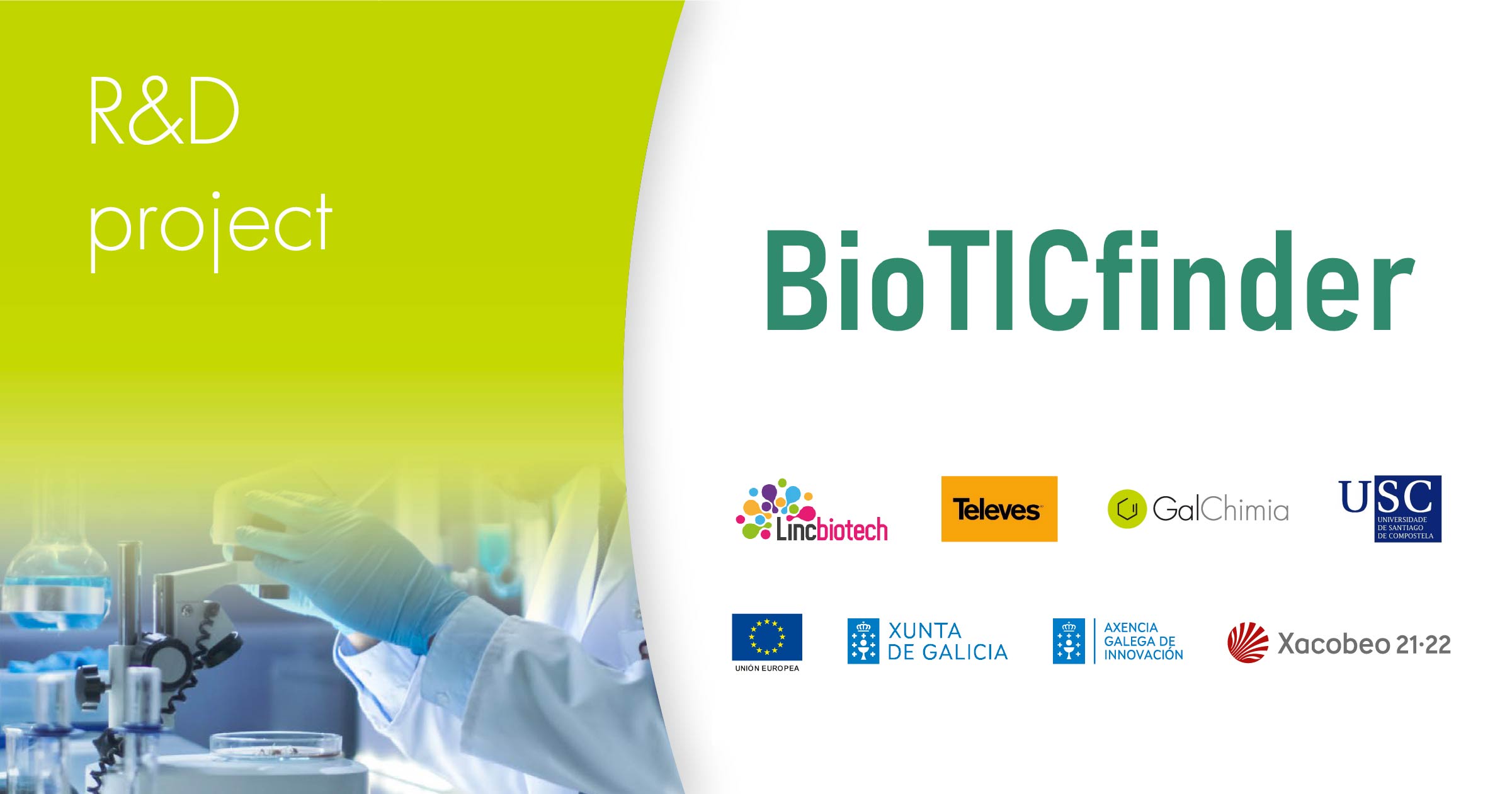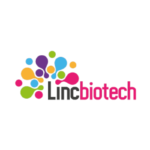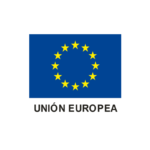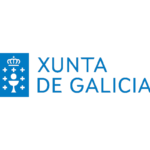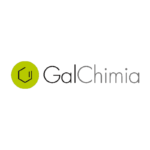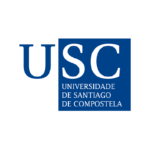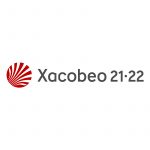Analysis and development of second-generation diagnostic and therapeutic solutions against SARS-CoV-2 through the combination of biomolecular and digital technologies
The BioTICfinder project aims to develop new diagnostic and therapeutic solutions through the multidisciplinary incorporation of various digital, molecular and biochemical technologies that would allow to create second-generation tools to fight the COVID-19 pandemic. The consortium is comprised by the companies Lincbiotech, Televes, and GalChimia, as well as the University of Santiago de Compostela.
This project has been subsidized by the Galician Innovation Agency (GAIN), through the Conecta COVID Program – European Union Response to the COVID-19 pandemic. This operation is co-financed by the European Union through the European Regional Development Fund (ERDF) within Thematic Objective 1, “Promote research, technological development and innovation”, included in the framework of the ERDF Galicia 2014-2020 Operational Program: A way to make Europe. Total project budget: €981,178.
Project summary
Execution period: January 2021 – April 2023
Total project budget: €981.178
Current status: Finished
Project objectives: The objectives of this project are the following:
Diagnostic scope. Development of new point-of-care methods and devices for virus detection, overcoming some of the current limitations of the tools available on the market.
- Development and validation of a rapid antigen test based on the use of chemically modified and optimized aptamers, adapted for lateral flow chromatography systems and that allow early detection of COVID-19 in asymptomatic patients and for veterinary use.
- Adaptation of aptamer technology to point-of-care devices that use optical, digital, and molecular technologies to detect the presence of the virus in residual samples with minimal sample pretreatment requirements.
- Digitization of the reading results of the lateral flow test and data processing generated, through the development and industrialization of a digital reader based on low-cost spectrographs for this type of test.
- Development of algorithms for processing the images generated by the lateral flow digital reader in order to determine the viral load of positive patients based on the intensity of the test line.
Therapeutic field. Development of new antiviral candidates based on the conjugation of aptamers and protein degraders against SARS-CoV-2.
- Development of a technological platform that combines digital techniques to predict interactions of the compounds with the proteins of interest, synthesis systems and chemical optimization and techniques of in-vitro and molecular analysis for the discovery and optimization of new antiviral candidates for COVID-19 and other infectious diseases.
- Design and synthesis of new antiviral candidates based on conjugates of aptamers and protein degraders (both PROTACs17 and LYTACs18) targeting the structural proteins of SARS-COV-2, which allows the treatment of COVID-19 in early stages of development of the illness.
- Selection of optimal candidates for aptamer and protein degrader conjugates through the application of digital technologies to interpret the interaction of the different ligands and components of the protamer complexes and of these with the proteins of interest.
- In-vitro validation of the protamer and lytamer candidates developed.
Project results by GalChimia
Task 5.4 Chemical characterization and analytical development of candidates
- The technical elements and optimal elution conditions for the treatment and analysis of protamer samples have been identified and validated.
- High performance (HPLC) and ultra-high performance (UPLC) liquid chromatography techniques have been used, as well as ESI-TOF and MALDI-TOF mass determination.
- Specific analytical methods have been developed for the conjugates obtained by “click” combination of 2 PROTAC recruiters and 1 aptamer, which have afforded very high levels of purifications (>98%).
Task 5.5 Scale-up and definition of the candidate production process
- Evaluation of the performance and scalability of the starting protocols, as well as a cost/gram study at different scales of the PROTACs chemical fragments (1 and >100 g).
- Exploration of two different approaches for conjugation: liquid phase and solid phase syntheses, although none of them were found suitable for scale-up.
- New synthetic alternatives were proposed through “click” chemistry methodologies.This synthesis has been successfully scaled up, and high-purity batches of two PROTAMERS have been obtained.

